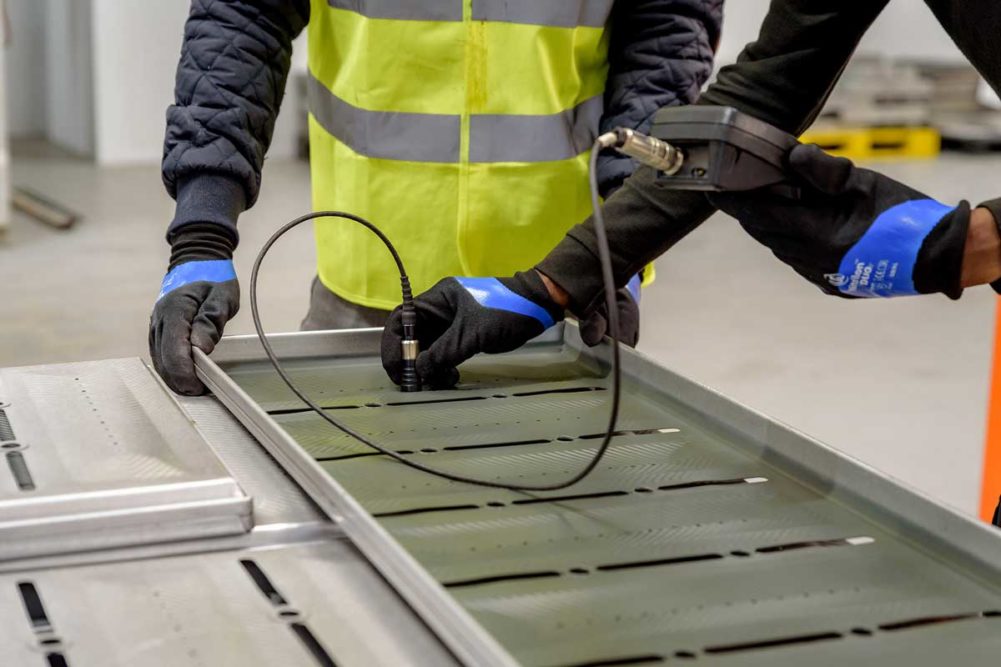Saving money in the long run often means starting with the right coating, which is determined by the type of product, its characteristics and the desired bake. Sugar and moisture content, fillings, toppings, and inclusions all factor into the type of coating needed for the proper release, said Trevor Walker, vice-president of North American sales, Bundy Baking Solutions.
“Coatings can be selected to match a bakery’s needs by understanding the product, type of pan and desired result,” he explained. “Because coatings act as a lubricant, it’s important to understand the characteristics of the baked product in relation to its resistance to heat, chemicals and humidity of baking.”
During the 2019 International Baking Industry Exposition, he added, the question that came up often involved new glazes for buns.
“Customers wanted to know about the best release agent and prevention of residual buildup of the glaze on the pans,” Mr. Walker said. “We are offering more pan coating options than ever to meet specific needs of our customers.”
Bundy Baking Solutions’ DuraShield line now includes new options to prevent corrosion and provide greater abrasion resistance, greater thermal stability and longer release life. Likewise, Mr. Walker said its OptiShield line of coatings has multiple formulations to match specific products and conditions in different bakeries. The company also improved the performance of its Americoat silicone glaze to provide additional releases.
For frozen waffle production, Bühler Group offers CELAS, a permanent surface coating for adherent-free baking. It was developed to replace Teflon coating in challenging baking processes. While Teflon coating needs to be renewed every six to eight weeks, CELAS has a minimum 20,000-hour lifetime, which allows for cost savings and less downtime, according to the company.
High-protein and other better-for-you products are pushing the boundaries for waffle makers. TSA Griddle Systems offers a proprietary process to eliminate the cleaning and recoating requirements of Teflon.
“Products like low fat and high protein are pushing the boundaries of what we historically run, which has pushed us to more aggressively develop solutions,” said Scott Grayson, sales manager, TSA Griddle Systems. “Production was much more driven based on large-scale repeatability. Now, that’s a given, and customers need flexibility now more than ever in order to accommodate fluctuations in market requirements.”
When it comes to pan glazing, bakers also need to determine if a product requires a release agent or not.
“Non-stick coatings allow bakeries to reduce or eliminate the use of release agents,” Mr. Walker noted. “Some product applications and pans require no release agents, while others do. This affects the ingredient cost as well as the maintenance of the pans.”
Last year, Bundy Baking Solutions launched Synova, which offers Supra pan release agents for bread, pizza, waffles and other baked goods. Since then, Mr. Walker said, G.M.O.-free and allergen-free oils have been introduced to meet bakers’ needs.
Release agents form a hydrophobic thin film between the pan and baked foods to maintain consistent release and extend the life of pans. Mallet, now part of Vantage, provides application specific release agents that are applied through a targeted spray process onto the baking surface to help release products and protect pan coatings, noted Roja Ergun, director of R.&D., Vantage Food.
Mallet analyses historical and newly generated data such as polymerization resistance, Oxidization Stability Index and smoke point to advance customer specific solutions.
“There are many factors that determine the difficulty of release based on product formulation and processing conditions such as moisture content, inclusion type, and release temperature,” Ms. Ergun said. “We rely on data to generate customized solutions to ease product release and improve end product quality for our customers.”
Precision means reducing or eliminating any mess that can come with pan oiling when it comes to spraying release agents.
Synova offers the AccuTech pan oiler with Precise Pulse Width Modulation nozzle control that minimizes waste, improves sanitation and reduces maintenance. The advanced programming controls the amount, rate and pattern of release agent application and provides real-time spray verification. Additionally, the AccuTech offers recipe management for pan size, nozzle position and oil placement.
Burford Corp., a Middleby Bakery Company, offers the Precision Oiler, which sprays a precise amount of oil and pan release agents on bakery products, pans and band ovens. The oiler requires no air, and with rapid cycle repetition and precise liquid metering, it can reduce costs by 50%. Burford provides an optional vision system that “spot sprays” only when product is present, which reduces oil usage, prevents buildup on the surface and may extend the life of pan coatings.
GOE-Amherst Stainless Fabrication introduced a spraying system that applies a topical coating of oil to all types and configurations of pans. It uses GOE’s proprietary dispensing design that eliminates problems associated with plugging of spray nozzles. For ease of cleaning, the system ensures open access to all components. Oil that is not applied to the pans is recovered and used, eliminating waste and saving on oil cost.
The AutoJet Precision Spray Control system by Spraying Systems applies the proper amount of coating directly on the target. Sensors trigger the application of the release agent only when targets are positioned properly in the spray station, which reduces release agent use by up to 70%.
The Bronze system by Mallet is designed for cake products. This targeted spraying system reduces oil usage, ensures precise applications and minimizes costly overspray. A new design ensures the system runs 20% quieter than previous cake pan greasers.
This article is an excerpt from the February 2020 issue of Baking & Snack. To read the entire feature on pan glazing, click here.





